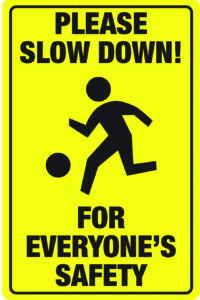
We have always rewarded speed. The fastest car. The fastest man in the world. The fastest animal. The fastest person to swimthe English Channel. Everywhere you look, we reward speed. We have become addicted to ‘fast’. In fact, almost all public health officials will concede that in a pandemic situation it is crucial to act quickly.
But, sadly, with COVID-19, speed has killed. There is no better example than the United States (US), where the rush to ‘reopen’ the country has resulted in a new wave of infections that is threatening to blow the numbers from the initial months of this pandemic in the US out of the water.
The US has seen one record day after another, with new infections peaking at 45,000 per day recently. “I would not be surprised if we go up to 100,000 a day if this does not turn around,” Dr Anthony Fauci, Director of the National Institute of Allergy and Infectious Diseases, told a Senate hearing on the pandemic in late June. And some of those infections will turn into hospitalisations and deaths.
Another example comes to us from the world of peer-reviewed medical journals. On 22 May, The Lancet published a research paper about hydroxychloroquine, the antimalarial drug, as a potential treatment for COVID-19. In a wide-ranging interview with The Lancet’s editor, Richard Horton, the New Yorker notes that “unlike other studies, which had merely questioned the drug’s effectiveness, The Lancet article claimed that the use of hydroxychloroquine carried a greater risk of heart arrhythmia and death.
The paper’s stark conclusions and huge sample size – it purported to use data from 96,032 patients on six continents – halted hydroxychloroquine trials around the world. But, within days, reporters and public health experts noticed anomalies in the study’s data set, which was provided by Surgisphere, a small tech company outside Chicago. Thirteen days after the paper was published, The Lancet retracted it.
An hour later, The New England Journal of Medicine, the world’s other pre-eminent medical journal, also retracted a COVID-19 study that relied on Surgisphere data.” Did the journal rush to publish data without proper peer-review? According to Horton, stuff happens. He cited bad actors and fraud as the main culprits in this unfortunate scenario with the retracted paper.
In another instance where The Lancet published a review examining the potential effectiveness of masks and social distancing which has been denounced by some for its statistical ‘looseness’, Horton pushed back at the idea that speed is to blame. In today’s environment it is difficult to have conversations “about the nuances of work” when the world is waiting for information, he said.
The speed factor also comes into play in the procurement of ventilators and personal protective equipment needed by hospitals. Throwing all caution to the wind as many hospitals and healthcare providers competed with each other, the rush to procure equipment without properly understanding who these medical supply vendors were led to actual fraud in which money changed hands, with amounts ranging from hundreds to millions of dollars.
But, more importantly, by avoiding traditional procurement channels in which background checks and the normal steps of quality assurance are conventional, lives were lost.
Diagnostic and antibody testing has not been excluded from this obsession with velocity either. In a rush to get COVID-19 tests out to hospitals, the CDC ended up botching the situation which set the US back by weeks, if not months, in its ability to ramp-up testing. As Neev Patel outlined in MIT Technology Review: “On 5 February the CDC began to send out coronavirus test kits, but many of the kits were soon found to have faulty negative controls (what shows up when coronavirus is absent), caused by contaminated reagents. This was probably a side effect of a rushed job to put the kits together.”
And then there is the rush to develop therapeutics and vaccines to treat COVID-19. Experts have warned that the acceleration of vaccine development at its current pace is unheard of in the history of our planet. It took 28 years to develop both the Varicella and FluMist vaccines. And 15 years each for the Human papillomavirus and Rotavirus vaccines. Scientists are trying to develop a COVID-19vaccine in 18 months.
But as Robert van Exan, a cell biologist who has worked in the vaccine industry for decades, stated in a recent interview: “There’s a cost to moving so quickly, however. The potential COVID-19 vaccines now in the pipeline might be more likely to fail because of the swift march through the research phase.”
It is a tough balancing act indeed. This is all new to everyone. But COVID-19 has shown us that slowing down might be the fastest way to get back to normal.
From testing to reopening to vetting scientific articles, we have lost track of time
This article was originally published here.